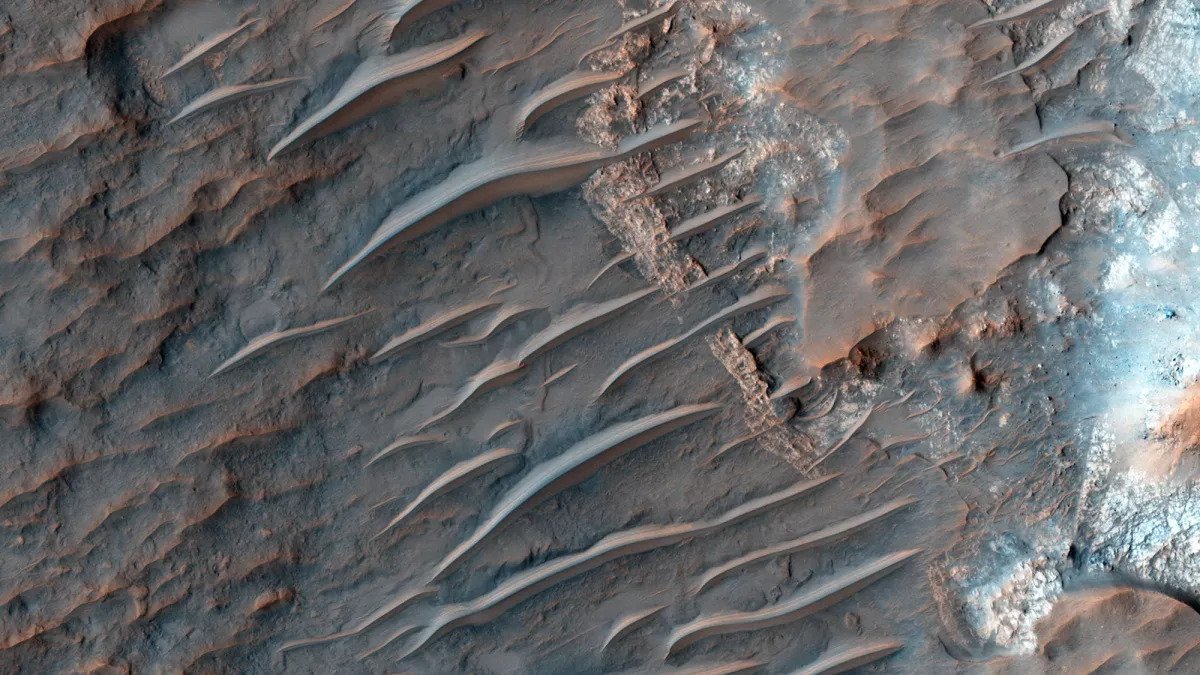The data obtained by the Chinese Zhurong rover and the Tianwen-1 orbiter showed that longitudinal Aeolian ridges were formed on the surface of the Martian dunes several hundred thousand years ago at an unusual angle. This indicates that the climate of the planet was changing a lot at that time.

Evidence of Martian dunes
Scientists continue to study sand dunes, which are located on the Utopia Planitia on Mars. The Chinese rover Zhurong worked in this area last year, and the Tianwen-1 spacecraft photographed them from orbit.
These dunes have a crescent shape, and until now their origin was not fully understood. Zhurong has found that they mainly consist of soft and light material. However, it is buried under a darker and more durable one, which forms longitudinal Aeolian ridges. These small elongated formations are formed under the influence of the wind, which blows in a certain direction.
In general, Tianwen-1 explored 2,262 dunes of light material all over Mars. Based on the number of craters from meteorites formed on them before the longitudinal Aeolian ridges began to form, scientists determined their age. It turned out to be in the range from 2.2 million to 400 thousand years. This means that around this time, the climate on Mars changed dramatically.
How the climate of the red planet has changed
Mars is usually considered to have turned from a relatively warm and humid planet into what we know now after a fairly long period at the very beginning of the existence of the Solar System. The Amazonian epoch, which began from 3.55 to 1.88 billion years ago, turned it into a desert.
However, numerous studies showed that during it there were climate changes that made the red planet more similar to Earth. After all, on both our planets, there are periodic changes in the angle of inclination of the plane of rotation to the ecliptic. On Earth, they are quite small, but they still lead to the beginning of ice ages.
On Mars, this angle varies from 15 to 35 degrees. However, unlike the Earth, this does not lead to cooling, but to warming at the poles of the planet. Recent studies showed that it was several hundred thousand years ago that streams of water flowed through Mars, which formed ravines. Now scientists have drawn attention to the fact that water vapor and dust during this period could be transported from the north and south to temperate latitudes.
There they were deposited under the surface, and there they can be found almost everywhere up to 60 degrees latitude, and closer to the equator they are found, despite the fact that the climate here does not contribute to their preservation. And it is the winds that carried moisture and dust that may be responsible for the formation of longitudinal Aeolian ridges on the surface of Mars.
At the same time, it is interesting that the direction of these formations differs from that of the dunes themselves; they were obviously also formed as a result of the movement of Martian air. This indicates that during the local “ice age” the predominant wind direction on the Utopia Planitia changed.
According to www.space.com
Follow us on Twitter to get the most interesting space news in time
https://twitter.com/ust_magazine

